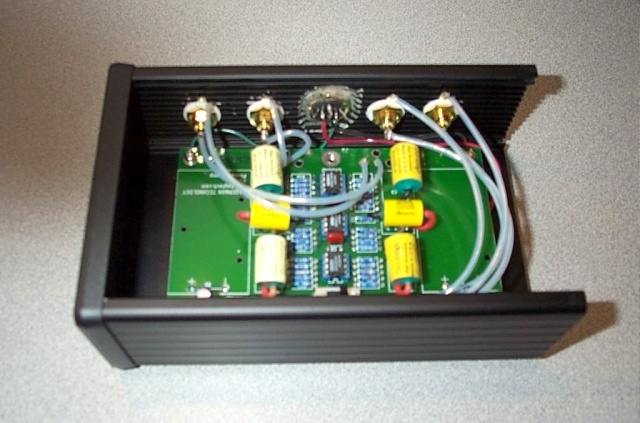Hi Jim and all,
Just a note to relate my experience regarding changing capacitors in my stock Bugle. I while back, Jim stated that a meaningful upgrade may be to change the caps at the C1-6 positions. So, I installed six Auricaps and listened. These caps were of the same values as the originals.
Immediately, I noticed more air and detail. Also, the bass is a little stronger and more defined. Cumulatively, these improvements seem to create more dynamics.
Then, I decided to play with some hook up wire. I substituted some 30 ga. gold-plated beryllium copper alloy for the original 24 ga. silver-plated copper. Increased detail, but dissappointing bass.

Then I threaded some 23 ga solid silver (7 9's pure) in teflon tubing and it became apparent that the silver was the ticket. Nice, smooth and natural from top to bottom, extended highs and lows, and great detailed presentation without being dry.
I didn't have any nice quality copper to try, but I have doubts of it working any better in my system.
Thanks to Jim for pointing out the most effective mod, another way to make this value-leading product even better.
Edit: Here's a picture. BTW, installed a new 2604 opamp on the output stage and it sounds a bit cleaner in the highs.

